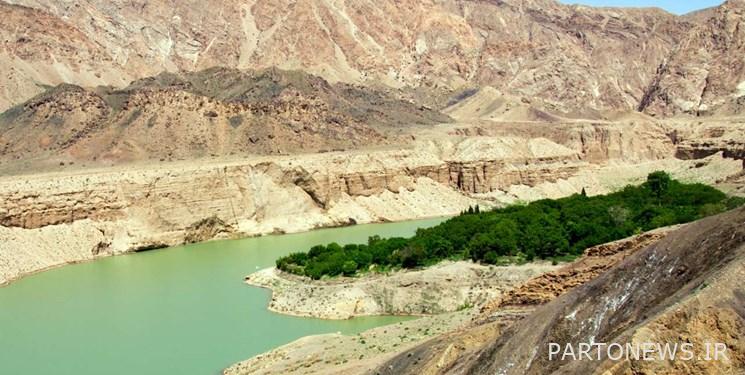Behind the curtain of the criticism of Chamshir Dam/ 90% improvement of river water quality after dewatering of the dam

According to the economic correspondent of Fars News Agency, the issue of construction and water extraction of Chamshir Dam was discussed and analyzed on the Iranian radio network.
At the beginning of this program, Amir Hossein Sadaqat, CEO of Chamshir Dam Engineering Consultant in the Ministry of Energy, first presented a brief report on the characteristics and information of this dam, which is located on the Zohra River, and said: The Shore Zohra River originates from Fars Province in the south of Iran. And after passing through the province of Kohgiluyeh and Boyer Ahmad and flowing the Baba Munir and Haft Qanat rivers into it, it enters Sardasht Behbahan in Khuzestan province and finally flows into the Persian Gulf.
Pointing out that the catchment area of the Zahra river is equal to 15 thousand square kilometers, he added: the average amount of water brought to this river in a year is about 3 billion cubic meters and it has a length of 500 kilometers.
Sedaghat stated: This river has a low base discharge and low quality water during most of the year (hot months) and this is while the quality of its output water increases drastically during the flood seasons, that’s why this river is called the river They call it wild and floody.
Emphasizing that nearly 70% of the flow of the Zahra River is related to the flood season and only 3 to 4 rainy months of the year.
Director General of Chamshir Dam Consulting Engineering in the Ministry of Energy, pointing out that the major studies of this project started in 2017, added: The review of qualitative statistics related to the Zahra bridge station (15 kilometers below the axis of the Chamshir Dam) indicates the low quality of water, which is without a doubt The construction of Chamshir Dam on the Zahra River will solve this problem.
Pointing out that the Kausar Dam was put into operation in 1983 in the Khairabad branch of the Zohra River, he added: The studies for the construction of the Chamshir Dam also began in 1971, and following the completion of the first phase of these studies in 1975 and the continuation of its approval process until 1983, in Finally, in 1989, its executive operations began.
What do critics of Chamshir Dam say?
In the continuation of this program, water expert Mohammad Wali pointed out some criticisms in the area of Chamshir dam water withdrawal and said: “The main criticisms raised by the environmental organization and activists in this area are related to the Chamshir dam water withdrawal”, the possibility of dissolving salts and increasing The percentage of solutes inside the tank and as a result of that increase the water salinity and the destructive effect on the downstream areas and lands.
He emphasized on improving the quality of the water released from the dam for agricultural purposes in the downstream areas of the dam and added: One of the criticisms of this project is the length of the selected statistical period of rainfall, which was from the past 50 years and before 2008. It is an old statistic.
Emphasizing that the country has been experiencing consecutive droughts for the past few years, this water expert said: the length of the selected statistical period should be matched and investigated with the climate change and droughts of the past few years and changes in rainfall over the past few years.
One of the criticisms of the water extraction of this dam is the location of the downstream fault inside the reservoir and the possibility of transferring the salinity of the fault into the dam and he said: it is necessary to develop scenarios for the use of this dam according to the conditions of climate change and also in line with the regulation of development. The agricultural lands downstream of the dam should be regulated and defined.
*Response to the criticism of Chamshir Dam
The managing director of Chamshir dam consultant engineering in the Ministry of Energy also responded to the criticism by emphasizing that the studies conducted for the construction and drainage of this dam were updated until the year 1400, and added: Regarding the impact of climate change and drought, modeling based on long-term information It shows that the amount of rainfall in the Zahra river basin upstream of Chamshir dam was insignificant and about 4-5%.
He also mentioned about the occurrence of faults in this area, pointing out that geological structures have different behaviors, and stated: The faults created in the Gachsaran Formation do not extend long and due to the plasticity of the rock structure, they have self-healing properties.
Emphasizing that the issue of water draining by the fault in this area has been rejected by geologists, Sadaqat said: the underground water level in Gach Haji mountain, which is located in the area of this fault, is 300 meters higher than the “Zehre River” and the reservoir water charge or The same height of water inside the tank is also equal to 100 meters.
Emphasizing that the purpose of constructing the Chamshir dam is to improve the quality and quantity of water in the downstream areas, he added: Chamshir dam and its adjacent structures were built on the thick limestone formations of the Mishan layer, and there is no Gachsaran formation up to 5 kilometers upstream of this dam.
In the end, Sedaghat said: Chamshir dam is a concrete roller dam with a height of 151 meters and is considered the highest roller concrete dam in the Middle East, which has the ability to produce 480 gigawatt hours of electricity throughout the year.
*Extensive studies have been done for Chamshir Dam
Meisham Fazli, director of studies for the Chamshir Dam project in Iran’s Water and Power Development and Resources Company, also continued this program regarding water extraction from this dam and the criticisms received by environmental activists on water salinity. The sections of this river have been done by consultants and different companies with the aim of checking the salinity and water quality.
Emphasizing that polluting sources at the entrance and reservoir of the dam should be identified and investigated to check the salinity of the water, he added: Statistics show that the quality of the water entering the dam reservoir has no serious problem in terms of salinity and its maximum salinity is in Dehydration is equal to 1500 PPT.
Pointing out that only 36% of the Chamshir Dam is located on the Gachsaran Formation, he said: “At the moment, almost 80% of the Kowsar Dam Formation, located in the Khairabad branch of the Zohra River, is in contact with the Gachsaran Formation, but there is a problem indicating an increase in salinity.” does not have.
The Director of Chamshir Dam Project Studies at the Iran Water and Energy Development and Resources Company added: After research, it was found that water intake from this dam and in the normal condition of the river, 85-90% of the water entering the lower areas of the Chamshir Dam basin compared to the current situation. The current one will be in a better condition in terms of quantity and quality.
Emphasizing that the river water quality improves during floods, he added: This shows that the Chamshir dam will have the ability to regulate and improve the water quality level in such a way that the water stored in the discharge is low and of inappropriate quality. Adjusted in the tank.
Emphasizing that expert and experienced experts have been employed to investigate the problems and ambiguities for dewatering this dam, he added: the long process of project implementation as well as facing consecutive droughts brought a lot of criticism to the project, which fortunately was done with field visits. Since the dam, many of these criticisms have been resolved.
He stated: Water withdrawal from Chamshir Dam requires a detailed investigation of the downstream areas of the dam, and in this regard, many studies were conducted both quantitatively and qualitatively on the agricultural lands downstream of the dam.
Fazeli pointed out that 84 percent of the agricultural land used is located downstream of Chamshir Dam in Khuzestan province (55 hectares of which are in Handijan and 6 hectares in Zeidoon of Behbahan city) and the remaining 16 percent are located in Kohgiluyeh and Boyer Ahmad provinces, he added: The lands located in Kohgiluyeh and Boyer Ahmad provinces are not capable of development due to land limitations and high altitudes, and overall the water quality in the downstream areas of the dam is not in a favorable condition.
The Director of Chamshir Dam Project Studies in the Iran Water and Power Development and Resources Company said: During the last two years, 55 thousand hectares of agricultural land located in Handijan, Khuzestan province, has decreased to 33 thousand hectares due to drought, and with the withdrawal of water from the Chamshir Dam, there is no doubt that Agriculture downstream of the dam will improve both quantitatively and qualitatively.
In the end, pointing out that the volume of Chamshir Dam reservoir is 2.3 billion cubic meters, he stated: One of the characteristics of the dams located in the southern regions of the country is the off-season and off-year regulation in such a way that the water entering the dam in rainy years The use is quantitatively and qualitatively adjusted and used in the years of water scarcity and drought.
*Behind the scenes of the criticism of the Chamshir Dam
At the end of the program, university professor Nikosakhen said: The results of sampling and expert opinions, as well as the studies conducted on Chamshir dam water intake, all emphasize the increase in the quality of the water coming out of the dam and the change in the quality of the water downstream of the river after the dam.
Pointing out that Chamshir dam water extraction will lead to a big change in the water of the Zohra river located in the east of Khuzestan and Bushehr province, he added: Meanwhile, a third party announced the interference between the development plan of a part of the oil reservoir of an oil company and the surrounding area of the dam reservoir. Chamshir sacrifices the revival of eastern Khuzestan to their own interests, and we should cry for the environmental activists who, based on false information, prevent the revival of Khuzestan and Bushehr in the lower reaches of Zahra.
This program was held with the presence of Engineer Amir Hossein Sadaqat, Managing Director of Chamshir Dam Engineering Consultant of the Ministry of Energy, Meisham Fazli, Director of Chamshir Project Studies of Iran Water and Power Resources Development Company, Mohammad Vali, an expert in the field of water resources, as well as Niko Sokhn, one of the university professors.
end of message/

